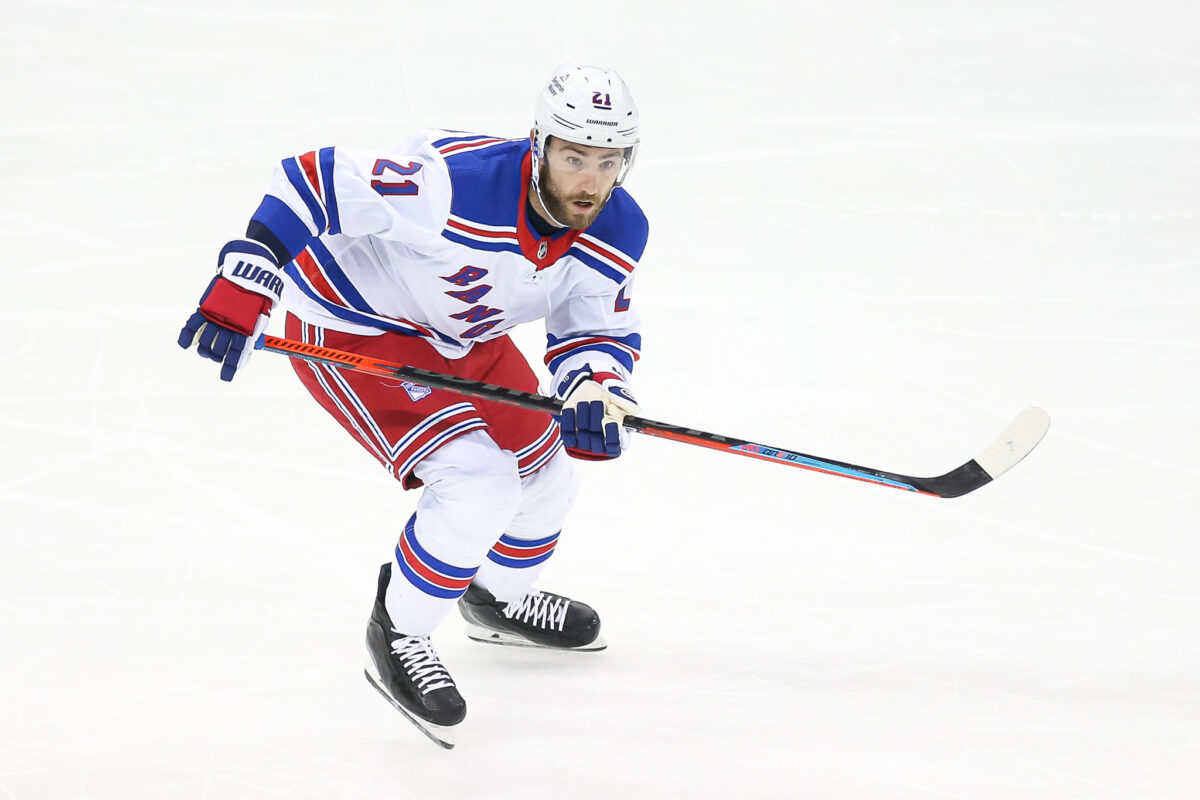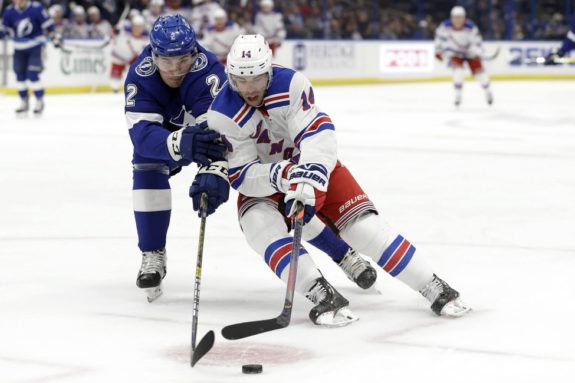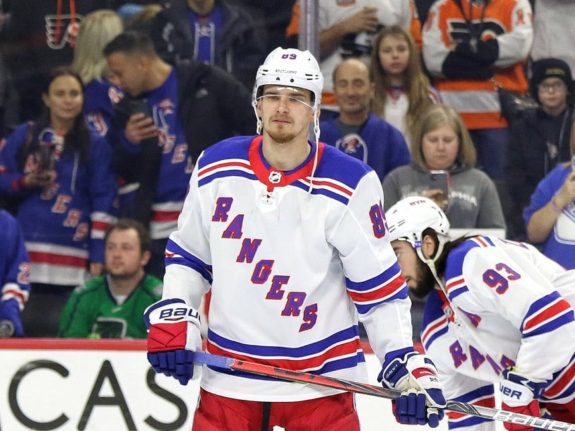After missing the 2021 Stanley Cup Playoffs, many expected New York Rangers general manager Chris Drury to boost the offense and add scoring to keep up with the rest of the league. However, he took a very different approach, signing multiple “tough guys” to bolster the fourth line.
After the May 3, 2021 game against the Washington Capitals, when two Rangers stars were abused by Capitals winger Tom Wilson, the front office was forced to take a different approach to build their team, adding toughness to better protect their stars.
However, in a day and age when fighting is on the decline, does adding these types of players help the team’s chances of winning a Stanley Cup, or is this a reaction to one play on one night? A deeper dive should provide some insight into the direction the Rangers are heading.
Changes to the Rangers’ Roster
Here are the major offseason acquisitions and departures to understand what Drury and company have in mind for the direction of their team. The biggest and loudest offseason move was acquiring perennial heavyweight Ryan Reaves from the Vegas Golden Knights. Drury also added depth and toughness with Dryden Hunt and Greg McKegg to round out a heavy, hard-hitting fourth line.
Similarly, Drury picked up Patrik Nemeth from the Colorado Avalanche to add size and grit to their third defensive pairing. Finally, he traded for and signed forward Barclay Goodrow from the Tampa Bay Lightning who also provides grit and toughness, but with Cup championship pedigree to boot. He can play up and down the lineup filling in holes as needed.

The most noteworthy departure was forward Pavel Buchnevich, who was traded to the St. Louis Blues for forward Sammy Blais. Losing Buchnevich, who was coming off a career year in points even in a shortened season, while only adding grit and toughness in return, showed the identity the Rangers have in mind for their club.
Solving the Tom Wilson Problem
While Drury’s moves weren’t edge-of-your-seat flashy, what management did this offseason was very productive and a step in the right direction for their rebuild. These are small pieces in a much bigger puzzle, but they are also extremely valuable.
Adding Reaves, along with the other two fourth-line forwards (Hunt and McKegg), immediately addressed a glaring need. They add invaluable protection for the skill players and up-and-coming young stars. Incidents like Artemi Panarin’s season-ending run-in with Wilson in 2020-21 will be few and far between with Reaves staring down the opposition’s bench.
Expect Reaves, arguably the kingpin of the heavyweights in the NHL, to police what happens to his teammates and give them added space by making opponents think twice before taking liberties. On top of his ability as a fighter, this new fourth line of Reaves, Hunt, McKegg will provide much-needed defense and a hard-hitting style every night.
Though this line will not find itself on the score sheet on most nights, all three players will be major contributors to the team’s overall success. Contending teams rarely have an offensively productive fourth line. They have a mix of players who can eat up hard minutes and focus on wearing down the other team’s defensemen with repeated pounding on forechecks and their physical play below the goal line.
Defensemen who are worn down by physical play all game tend to become less productive in their own end. That’s when the Rangers’ highly-skilled top-six forwards can be their most effective and when many games are decided.

Goodrow and Nemeth fall in line with Drury’s decision to add players who are strong defensively. The Rangers ended last season slightly above the league average in goals-for and slightly below the middle in goals-against. If they continue to climb offensively as their young guns mature while decreasing their goals-against with sound depth play, it won’t be long before they make the playoffs.
Related: Rangers Fans Need to Be Excited About Their Recent Acquisitions
If the Blueshirts find themselves back in the playoff picture this season, when games are tighter, harder-hitting, and more defensive, these types of players will prove extremely useful in the quest for the 16 wins to the Stanley Cup.
Drury Helped His Cap Situation
Drury’s offseason moves have not only made an immediate impact on the lineup, but they also put the team in a great situation salary cap-wise. With the Buchnevich trade, many people only saw 20 goals and nearly 50 points heading out of town. What they didn’t see was that re-signing him would cause a bottleneck to the salary cap in the coming years. Instead of letting him walk in free agency, Drury brought in Sammy Blais, who showed flashes of production in his time with the Blues. If he can find a way to be more consistent, he could be part of the team’s future, and if not, he only carries a $1.5 million average annual value (AAV) for this season.
By contrast, Buchnevich was up for a new contract. While he was productive in his time in New York, his new four-year, $5.8 million AAV contract wouldn’t help the Rangers in their quest to re-sign the long list of entry-level contracts expiring in the coming years or fill their need at center.

With Adam Fox’s entry-level contract expiring at the end of this season, the Rangers were quick on re-signing the Norris Trophy-winning defensemen. Fox recently signed a seven-year, $66.5 million deal ($9.5 million AAV). In the next three years, the Rangers also have expiring contracts from three first-rounders in Kaapo Kakko, Alexis Lafreniére, and K’Andre Miller. All of them, and the need to find a number one center, will make the flat cap era difficult to navigate. Drury’s offseason moves were productive, for now, and later. In the short term, the team has added the much-needed toughness to protect their stars while also saving very valuable cap space for the coming years when they are all up for new tickets.
The new roster has the pieces in place to make a run at the playoffs this season, but management has also stayed the course on the rebuild. After all, an original-six team like the Rangers expects more than just making the playoffs. Staying the course with small effective changes that leave cap room available for the future will help bring the Cup back to Madison Square Garden.